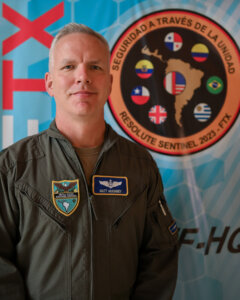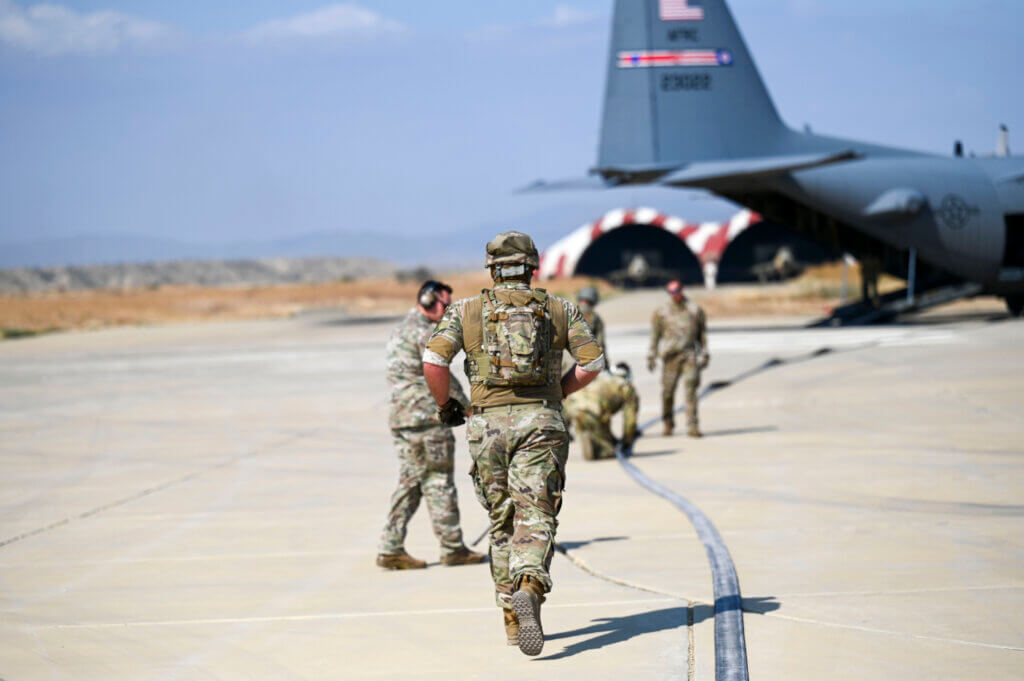
Air Force Reserve Command brought A10s to South America for the first time as part of the annual training exercise Resolute Sentinel 23. And also doubled the size of the training, according to the Combined Joint Task Force commander.
“The good thing about that is it enables the reserve to integrate with active-duty service and say, ‘Hey, can we come together as a team and be able to move this big effort to move all these capabilities down here?’” said Air Force Col. Matt McKinney, of the 12th Air Force Command. “Because they moved down here about 250,000 tons of equipment and capabilities. That’s a big lift.”
Nine nations came together for Resolute Sentinel 23 – an exercise aimed at improving readiness and collaboration with partner nations – to manage more than 1,000 people and assets.
That effort, according to McKinney, shows what the reserves bring to the military and the “greatness of having a reserve command” that can support an exercise like Resolute Sentinel, which concluded in late July.
“They went after some unique capabilities and some agile combat deployment, some ACE concepts [and] they’re able to bring some of those things down here and do that,” McKinney said. “And if we didn’t have the reserve component, we wouldn’t have been able to do such a big training opportunity with the Peruvians and be so successful in my mind.”
Maj. Shelley Ecklebe, chief of the 442d Fighter Wing Public Affairs, said the AFRC was afforded the opportunity to provide the combat aircraft element, which led to the beginning of Patriot Fury, the reserve component’s contribution to Resolute Sentinel.
“As with any operating location, Central and South American bases offer unique training environments,” Ecklebe said. “Participating reserve components have had to research each operating location and build training schedules based on their mission essential tasks.”
Peruvian planning
McKinney said when they arrived in Peru, there was a legal limitation on getting gas for airplanes except at one airport. So the active duty and reserve component got together, along with their Peruvian partners, to find a solution that would allow A10s to be used.
“That one little planning effort between our partner nations and our reserve and the active duty enabled the A10s to come down here when a few weeks ago it was not going to happen because of the fuel situations,” McKinney said.
RELATED: Civil-support training prepares guardsmen to become ‘tip of the spear’ for CBRN events
However, there was a learning curve to blending reservists and active-duty members. Of the four “numbered Air Forces” that came together, three were from the reserve command, while the 12th Air Force is largely active duty.
“That’s very challenging when they all have different training objectives,” McKinney said.
Col. Fidel Castro, the Peruvian deputy commander for Resolute Sentinel 23, said 777 Peruvian military personnel across the armed forces participated in the exercise.
“That’s why we are boosting our capabilities, to be prepared to do these exercises,” he said. “ … It’s impressive how can we exchange experiences from other systems, from other doctrines.”
Castro said that readiness and willingness to perform in Resolute Sentinel have been the biggest contributions from the Peruvian military.
“This is impressive,” Castro said. “People had been working very hard through the beginning, solving logistics solutions … for the movement of all assets all around country … [and that’s] why I would like to stress – that the will and the readiness of the people has been the very best contribution … In that new role, they’re doing a great job and with exercises like these and they’re going to be better prepared in order to help the people.”
Castro said Resolute Sentinel was the first time that Peruvian armed forces, which use the SU-25, a Soviet-era aircraft, flew alongside A10s.
“We are integrating those missions with low level navigations, joining Peruvian assets with U.S. assets in the same scenario … We have never experienced something like this in our country,” he said.
Part of the mission also included Embedded Health Engagement Team, according to McKinney. U.S. doctors worked alongside Peruvian doctors at eight hospitals and helped treat patients.
Resolute Sentinel 23, a 12th Air Force-led exercise, began June 24 in Peru and ran through July. Its first iteration occurred in 2021.
Editor’s note: Gregory Hitchcock contributed to this report.

